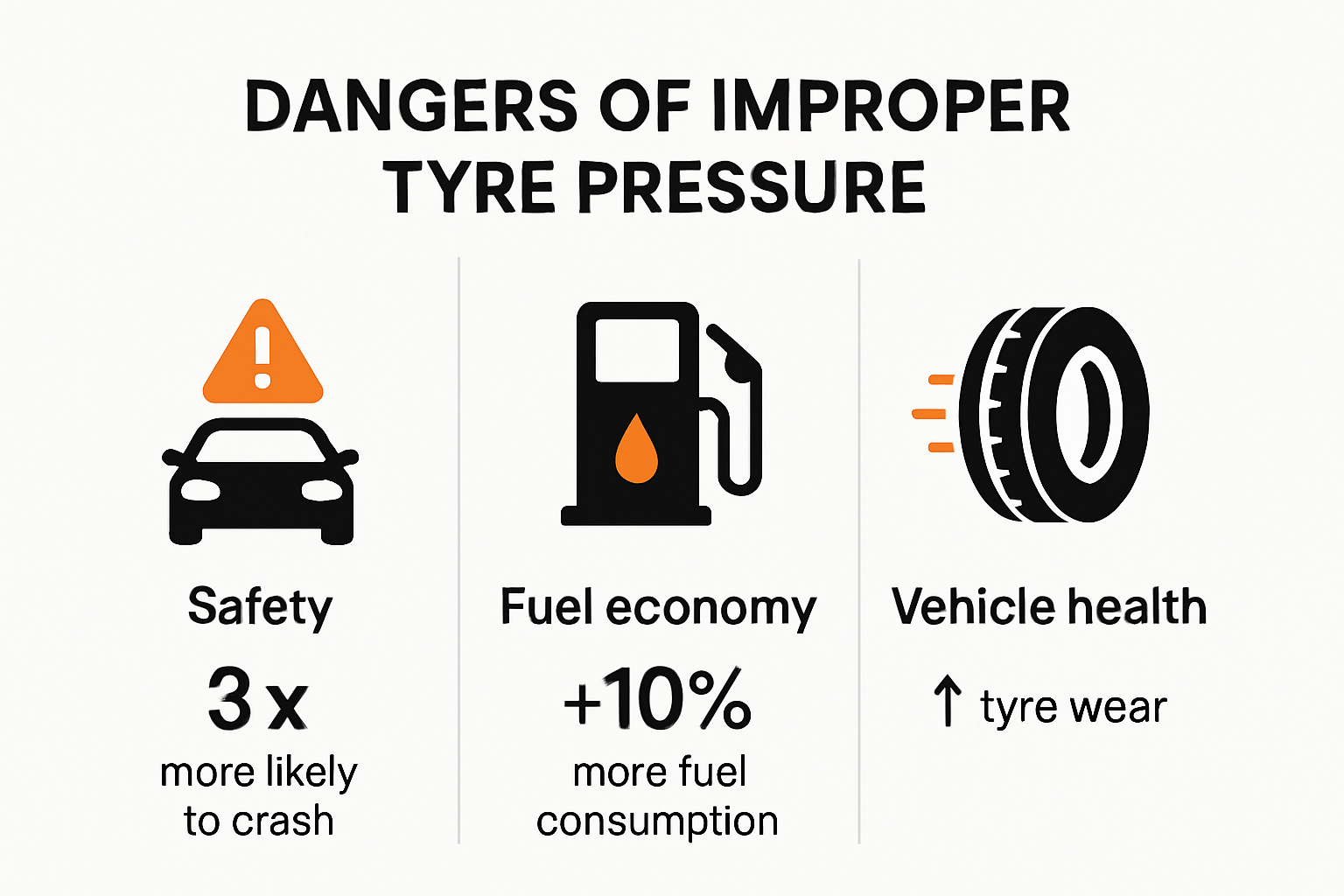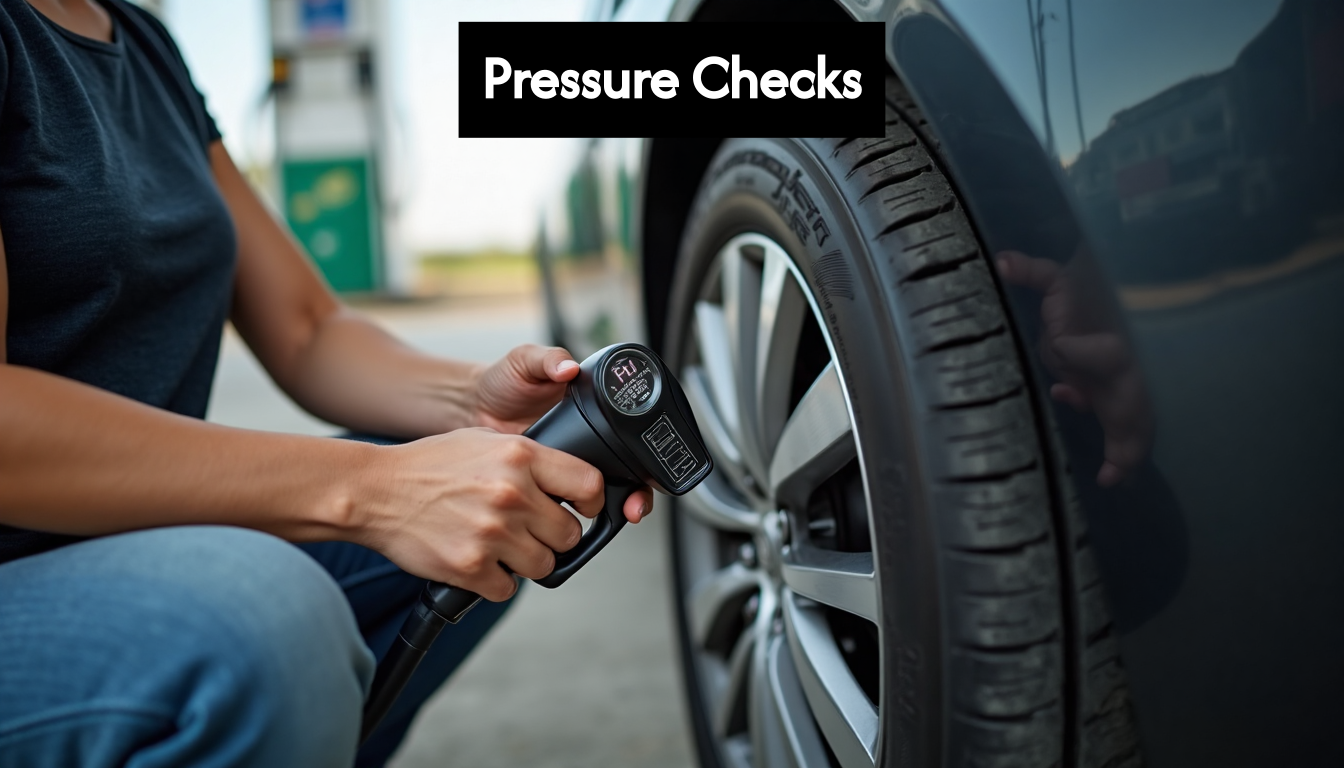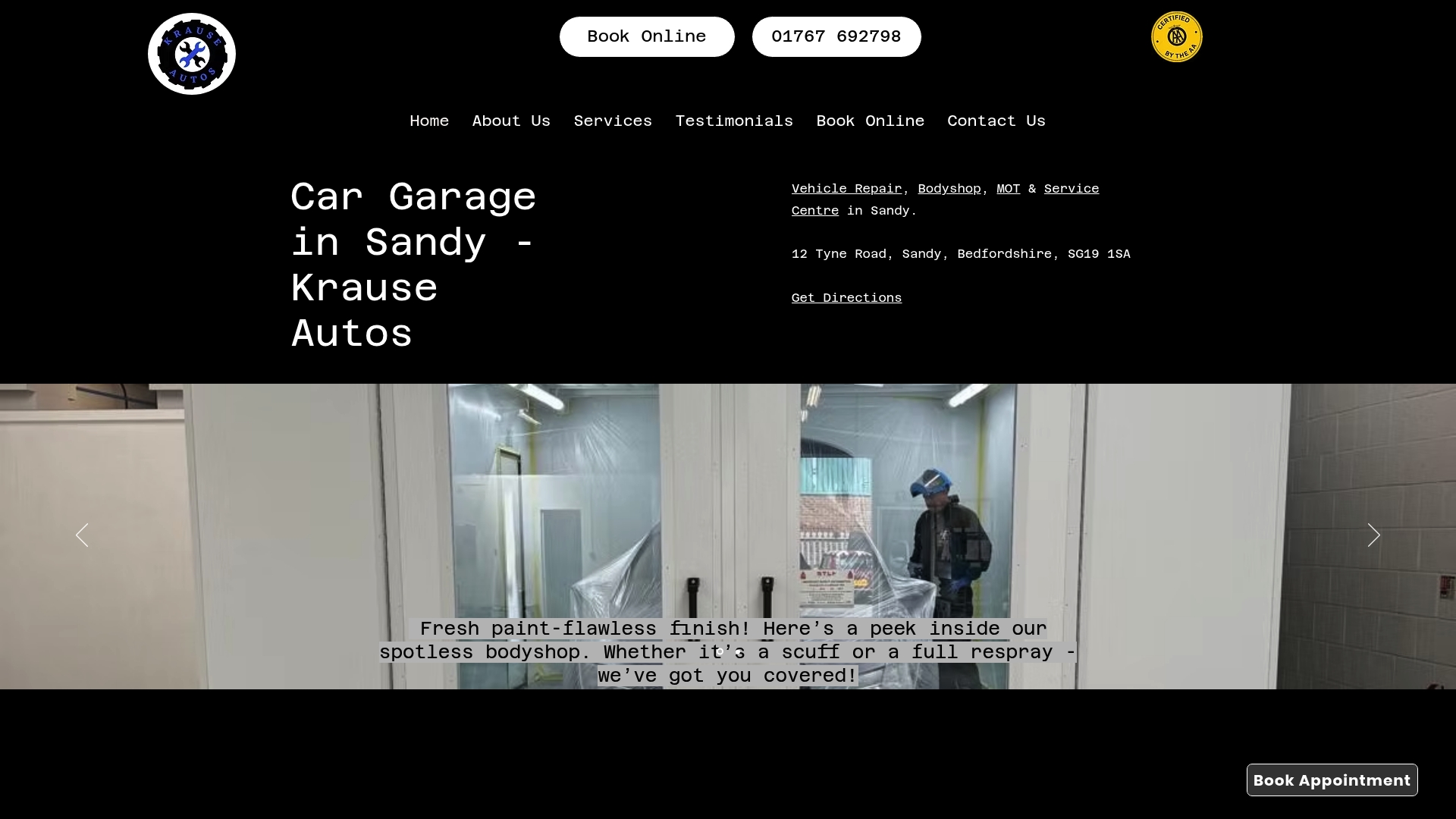How to Check Tyre Pressure in 2025: A Simple Guide for All Drivers
- coledem
- Jun 14
- 9 min read
Updated: Jun 22
Tyre pressure checks might sound tedious, yet this small step could save more than just money. Shockingly, around 2 million MOT failures in the UK each year are tied to tyre defects, with one million flagged as dangerous. Now for the bit that most drivers overlook. Smart technology and MOT warnings are useful, but they still miss the hidden hazards that only hands-on checks reveal. Want to know why that pocket-sized pressure gauge matters more than high-tech dashboards ever will?
Table of Contents
Quick Summary
Why Correct Tyre Pressure Matters
Tyre pressure might seem like a minor detail, but it plays a critical role in your vehicle’s overall performance, safety, and efficiency. Neglecting this simple maintenance task can lead to significant consequences that extend far beyond just your tyres.
The Safety Implications of Improper Tyre Pressure
Incorrect tyre pressure transforms your vehicle’s fundamental dynamics in ways most drivers never consider. According to TyreSafe, police forensic data reveals that tyre defects are a contributing factor in numerous serious road incidents. Under-inflated tyres create a perfect storm of potential hazards.
When tyres are not inflated to the manufacturer’s recommended pressure, they experience increased contact with the road surface. This additional friction generates excessive heat, accelerates tread wear, and dramatically reduces your vehicle’s handling capabilities. Imagine attempting to navigate a sharp turn or make an emergency stop with tyres that cannot respond precisely - the risks become immediately apparent.
Fuel Economy and Vehicle Performance
Beyond safety, correct tyre pressure directly impacts your vehicle’s fuel efficiency. Lease Car UK highlights that maintaining proper inflation can significantly improve fuel economy. Under-inflated tyres create more rolling resistance, forcing your engine to work harder and consume more fuel. The financial implications are substantial - even a small deviation from recommended pressure can increase fuel consumption by up to 5%.
Consider the broader economic perspective. A set of tyres that wear unevenly due to incorrect pressure might need replacement years earlier than a well-maintained set. This translates to unnecessary expense and environmental waste. Every percentage point of efficiency matters, both for your wallet and the planet.
Long-Term Vehicle Health

The Driver and Vehicle Standards Agency (DVSA) estimates approximately 2 million annual MOT failures are directly related to tyre defects, with one million classified as dangerous. This statistic underscores the critical nature of regular tyre pressure checks.
Proper tyre inflation ensures even weight distribution, reduces stress on suspension components, and maintains optimal wheel alignment. It’s not just about the tyres themselves but the entire vehicle’s structural integrity. Uneven pressure can lead to premature wear on suspension systems, wheel bearings, and other critical mechanical components.
Your vehicle is an intricate system where each component relies on others to function efficiently. Tyre pressure is the foundation of this system. By dedicating a few minutes periodically to check and adjust your tyre pressure, you’re investing in safety, performance, and long-term vehicle health. It’s a small effort with substantial returns - protecting your vehicle, your finances, and most importantly, your safety on the road.
When and How Often to Check Tyres
Maintaining proper tyre pressure is not a one-time task but a consistent responsibility that demands regular attention. Understanding the optimal frequency and circumstances for tyre checks can significantly enhance your vehicle’s safety and performance.
Monthly Maintenance Rhythm
Protyre recommends a monthly tyre pressure check as a fundamental practice for responsible vehicle ownership. This frequency strikes a perfect balance between proactive maintenance and practical routine. Just as you might set reminders for bill payments or annual medical check-ups, incorporating a monthly tyre pressure inspection into your routine can prevent potential issues before they escalate.
The rationale behind monthly checks is rooted in the natural tendency of tyres to lose air pressure gradually. Temperature fluctuations, small punctures, and regular use can cause incremental pressure changes that might go unnoticed. A monthly check ensures you catch these subtle variations before they compromise your vehicle’s performance or safety.
Strategic Timing for Pressure Checks
TyreSafe advocates for what they call the A.C.T checks - Air pressure, Condition, and Tread depth. While monthly checks form the baseline, certain scenarios demand immediate attention. Before embarking on long journeys, especially during holiday travel or extended road trips, a comprehensive tyre pressure check becomes crucial. The additional weight of luggage and prolonged driving can exacerbate any existing pressure inconsistencies.
Seasonality also plays a significant role. Temperature changes dramatically affect tyre pressure. During winter, when temperatures drop, tyre pressure can decrease by approximately 1 PSI for every 5.5 degrees Celsius reduction. Conversely, summer heat can cause pressure to increase. Therefore, transitional seasons like autumn and spring are ideal times for more rigorous tyre inspections.
Additional Check Triggers
RAC highlights several specific scenarios that should prompt an immediate tyre pressure check. These include after hitting significant road bumps, following any noticeable changes in vehicle handling, or if you’ve parked the car for an extended period.

For those who drive frequently or cover substantial mileage, weekly checks might be more appropriate. Professional drivers, commercial vehicle operators, and individuals with high-mileage commutes should consider more frequent inspections. Similarly, if you frequently transport heavy loads or drive in challenging terrain, your tyres will experience more stress and require more frequent monitoring.
Remember, tyre pressure checks are more than a mechanical task - they’re a critical safety practice. By establishing a consistent routine and being attentive to your vehicle’s needs, you’re not just maintaining your tyres, but protecting yourself, your passengers, and other road users. A few minutes of regular attention can prevent potential roadside emergencies and ensure your vehicle performs at its optimal level.
Ultimately, treat your tyre pressure checks like a health check-up for your vehicle. Regular, consistent monitoring is the key to long-term reliability and safety.
Step-by-Step Guide to Checking Tyre Pressure
Checking tyre pressure might seem intimidating, but with the right tools and approach, it becomes a straightforward maintenance task that any driver can master. This comprehensive guide will walk you through the process, ensuring your vehicle’s safety and performance.
Preparation and Essential Tools
HIQ Online recommends gathering the right equipment before beginning your tyre pressure check. You will need a reliable tyre pressure gauge, which can be digital or analogue. These are affordable and available at most automotive stores or petrol stations. Additionally, keep the vehicle’s manual handy, as it contains the manufacturer’s recommended pressure specifications for your specific model.
Before starting, ensure your vehicle is parked on a level surface. The key is to check tyres when they are cold, which means the car has been stationary for at least three to four hours or driven less than two miles. RAC emphasises that warm tyres can provide falsely high readings, potentially leading to incorrect inflation.
The Checking Process
Begin by removing the valve dust cap from the tyre valve. Store this carefully to prevent loss. Press your tyre pressure gauge firmly onto the valve stem. For accurate results, ensure the gauge is positioned straight and makes a complete seal. Hold it in place for a few seconds to get a stable reading.
Compare the measured pressure with the recommended specifications in your vehicle manual. These are typically found inside the driver’s side door frame, fuel cap area, or in the handbook. Pay attention to potential differences between front and rear tyres, as some vehicles require varied pressures.
Modern Technology and Additional Considerations
Vehicles manufactured after 2012 in the UK are equipped with a Tyre Pressure Monitoring System (TPMS), as noted by HIQ Online. While this technology provides automatic alerts about pressure changes, it should not replace manual checks. The TPMS is an additional safety feature, not a complete substitute for hands-on maintenance.
If your tyre pressure is incorrect, use an air compressor to add or release air. Most petrol stations offer these facilities. When inflating, add air in short bursts, rechecking the pressure frequently to avoid over-inflation. If you’re unsure about the process, many garages offer free tyre pressure checks.

Remember to check the spare tyre as well. Often overlooked, the spare can be crucial in emergency situations and should be maintained at the recommended pressure. Some compact spare tyres, often called ‘space-saver’ tyres, might require different pressure levels compared to standard tyres.
Consistent tyre pressure checks are more than a maintenance task - they’re a safety practice. By dedicating a few minutes monthly to this process, you’re ensuring optimal vehicle performance, fuel efficiency, and most importantly, your safety on the road. Whether you’re a new driver or an experienced motorist, mastering tyre pressure checks is an essential skill in responsible vehicle ownership.
Common Mistakes and Useful Tips
Navigating the world of tyre pressure maintenance can be tricky, with numerous potential pitfalls that even experienced drivers might encounter. Understanding these common mistakes and implementing strategic tips can significantly enhance your vehicle’s performance and safety.
Misunderstandings About Pressure Checking
RAC highlights a critical error many drivers make: checking tyre pressure at the wrong time. Tyres naturally heat up during driving, which causes the air inside to expand and create falsely elevated pressure readings. This means checking tyres immediately after a journey can lead to inaccurate measurements.
Another widespread misconception is assuming all tyres on a vehicle require identical pressure. Different vehicles have varying weight distributions and manufacturer specifications. Some cars might need different front and rear tyre pressures, so always consult your vehicle’s manual for precise recommendations. Blindly applying a one-size-fits-all approach can compromise vehicle handling and safety.
Overlooked Maintenance Aspects
HIQ Online emphasises the importance of comprehensive tyre maintenance beyond just pressure checks. Drivers frequently neglect the spare tyre, which also loses pressure over time. A flat or under-inflated spare can be disastrous during an emergency situation. Include the spare in your regular inspection routine, ensuring it’s ready when you most need it.
Tyres naturally lose approximately 1 psi (0.07 bars) per month, a fact many drivers are unaware of. This gradual pressure loss means that bi-weekly checks are more effective than monthly inspections. Before long journeys, always perform a thorough tyre pressure assessment to prevent potential issues on the road.
Advanced Tips for Precision
Invest in a high-quality digital tyre pressure gauge for more accurate readings. Analogue gauges can become less precise over time, potentially leading to incorrect measurements. Digital gauges offer consistent, reliable results and often include additional features like backlit displays for easier reading in low-light conditions.
Consider the impact of temperature on tyre pressure. Seasonal changes can significantly affect air pressure. During winter, when temperatures drop, tyre pressure decreases more rapidly. Conversely, summer heat can cause pressure to increase. Adjust your checking frequency and be more vigilant during these transitional periods.
When adding air, use short, controlled bursts and recheck the pressure frequently. Over-inflation can be just as problematic as under-inflation, affecting vehicle handling, tread wear, and overall safety. If you’re uncertain about the process, many local garages offer free tyre pressure checks and can provide professional guidance.

Remember, tyre pressure maintenance is not just a technical task - it’s a critical safety practice. By avoiding these common mistakes and implementing these strategic tips, you’re taking proactive steps to protect yourself, your passengers, and other road users. A few minutes of careful attention can prevent potential roadside emergencies and ensure your vehicle performs at its optimal level.
Ultimately, treating tyre pressure checks as an essential aspect of vehicle care demonstrates responsible ownership and commitment to road safety.
Frequently Asked Questions
How often should I check my tyre pressure?
You should check your tyre pressure at least once a month. Additionally, it’s essential to check before long journeys or when there are significant temperature changes, as these can affect tyre pressure.
What is the recommended tyre pressure for my vehicle?
The recommended tyre pressure for your vehicle can typically be found in the owner’s manual, on the driver’s side door frame, or within the fuel cap area. Always refer to your manufacturer’s specifications to ensure accurate pressure.
Why is checking tyre pressure important?
Regularly checking tyre pressure is crucial for safety, fuel efficiency, and long-term vehicle health. Incorrect tyre pressure can lead to handling issues, increased fuel consumption, and premature tyre wear, making it vital for responsible vehicle maintenance.
Can I rely solely on my car’s tyre pressure monitoring system (TPMS)?
While a TPMS alerts you to significant drops in tyre pressure, it shouldn’t replace regular manual checks. It’s best to combine TPMS with hands-on inspections to ensure your tyres are always correctly inflated.
Get Peace of Mind With Professional Tyre Care in Sandy
Worried about hidden tyre pressure issues or missed warning signs? Even with regular checks at home, you might still face uncertain readings, confusing dashboard alerts, or sudden drops in pressure brought on by Bedfordshire’s cold snaps. The guide highlighted just how quickly problems can spiral if not caught early. Protecting your safety and your car requires more than just a pressure gauge — it takes expert eyes and honest advice you can trust.
Take the next step to safer driving today. Bring your car to Krause Autos in Sandy for a thorough tyre check or replacement. Our family-run garage uses the latest diagnostic tools for accurate readings and professional inspections. Whether you need routine maintenance, puncture repairs, or new tyres, our team will make sure your vehicle is truly road-ready. Book your visit now and feel confident every time you get behind the wheel.






Comments